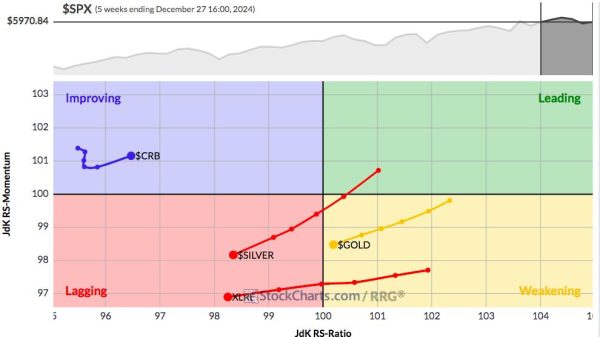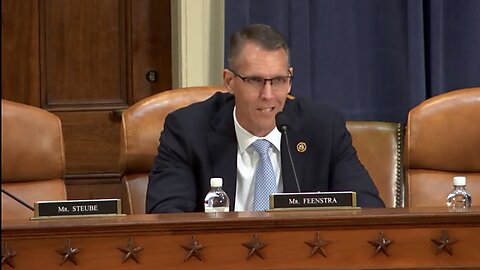Romina Boccia
At a recent congressional hearing, Representative Randy Feenstra (R‑IA) grilled witnesses on one fundamental point of disagreement regarding how Social Security works: Does Social Security spending add to the national debt? (Scroll down for the transcript of the exchange.)
The answer is yes because the US government did not save any of the excess payroll taxes the Treasury Department collected when Social Security was running a surplus. Instead, the US government turned around and spent those payroll taxes on other things.
While Social Security Chief Actuary Stephen Goss suggested at the hearing that “Social Security can only service some of the debt that the rest of the federal government develops,” Social Security surpluses have also fueled the growth in federal government borrowing. Several economic studies confirm that Social Security surpluses have historically not been used to reduce the public debt, but rather to increase non–Social Security government spending. Some estimates suggest a dollar‐for‐dollar ratio in higher spending, meaning that Social Security’s surplus payroll taxes increased non–Social Security government spending in direct proportion.
Another way to put it is that the payroll taxes the government collected in excess of what was necessary to pay out Social Security benefits present a double‐whammy: they simultaneously increased government spending in decades past while leaving future workers with a debt owed to Social Security. This fiscal paradox underscores the intricate challenges of managing long‐term entitlement programs on a pay‐as‐you‐go basis within the broader context of federal budgeting.
Congress used funds meant for the future to not only cover, but also to expand, current and future costs, creating greater debt afflicting both current and future generations.
These dynamics are important to keep in mind as the debate over Social Security reform heats up in the coming years—the closer we get to 2033 when Social Security’s trust fund will be depleted and automatic benefit cuts of 21 percent loom. Any “solution” that increases Social Security cash‐flow surpluses to the US Treasury while also increasing future Social Security cash‐flow deficits to be repaid by workers, is a band‐aid approach that doesn’t solve much of anything. As the Manhattan Institute’s Brian Riedl explained in a thread on X: “A truly solvent system would aim to achieve annual balance (or at least close), instead of running up big surpluses that cannot be saved and forcing taxpayers to spend trillions bailing out the system later with huge interest costs.”
When Representative John Larson (D‑CT) suggested during the hearing that Social Security “does not contribute a penny to the national debt,” he was conflating wishful thinking about how Social Security was portrayed to work with fiscal reality about how ‘the system’ actually works. Larson’s statement is only true if you think that the government saved excess payroll taxes for Social Security (which it did not) or you treat the gross national debt (which includes intragovernmental debt) as the only relevant measure of government debt (the publicly held debt is the most economically relevant measure because it accounts for debt owed to the public based on bonds sold).
While Social Security doesn’t have legal borrowing authority in the way that most other government programs do, this doesn’t change the fact that every time Social Security redeems a bond with the Treasury, the Treasury must go out and raise that money from the public by issuing new government debt. So, while Social Security must not add to US debt, on paper, in reality, paying for Social Security benefits in excess of payroll taxes collected does add to the US debt.
See below for a lightly edited transcript about how Social Security spending adds to the publicly held debt, pulled from the June 4, 2024 Social Security Subcommittee hearing on “The Social Security Trust Funds in 2024 and Beyond,” which explains this concept in more detail:
Rep. Feenstra (R‑IA): We have a lot of concerns with Social Security, and we have to resolve them. We also have to be singing from the same songbook, understanding what’s happening. Dr. Swagel, I have many topics to discuss, but I want to ask you: does Social Security—its payments—create debt? I am hearing from the other side that there is this view that it doesn’t. I’d like you to explain to me: does it create debt?
Dr. Swagel: There is lots of ways to look at it, and that is part of the confusion. The $150 billion that Steve and I both talked about, that is being funded by the Treasury. The cash has to come from the Treasury, to get that 150 billion dollars.
Feenstra: [Social Security] has got to redeem its assets….
Swagel: Correct. It’s an asset for Social Security but a liability for the Treasury. The Treasury borrows [to provide Social Security with the cash].
Feenstra: So how does the Treasury redeem its assets?
Swagel: The Treasury raises cash by selling bonds.
Feenstra: So, it actually is [adding] to our debt.
Swagel: To redeem the assets from the [Social Security] trust fund, the Treasury must borrow and create debt.
Feenstra: Yes, it’s got to create debt. Mr. Goss.
Mr. Goss: If we redeem $100 billion of debt that is owed to the trust funds and we trade that for $100 billion that is now owed to the public, it’s merely a swap. The total [gross] federal debt is unchanged.
Feenstra: But the Treasury still needs to sell bonds to do that. Is that a fair statement?
Goss: It has to sell bonds to the public [when] redeeming the same amount of bonds that are held by the trust fund.
Feenstra: Thank you. Mr. Swagel, can you answer that?
Swagel: The numbers that we focus on are debt held by the public. What Steve is saying is correct, the debt held by the public goes up.
Read our latest Social Security fact sheet.
























